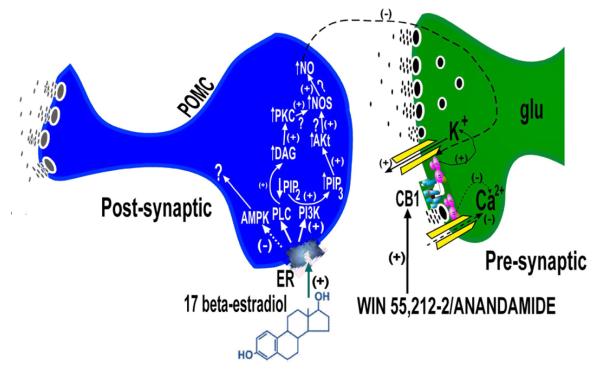Figure 2.
Schemata depicting our current understanding for how estrogens disrupt presynaptic CB1 receptor-mediated signaling at glutamatergic inputs impinging upon a subpopulation of anorexigenic POMC neurons that project to the PVN and help regulate energy balance. A) Under hypoestrogenic conditions cannabinoid agonists such as anandamide and WIN 55,212-2 robustly inhibit glutamatergic input onto POMC neurons. The quiescence of the POMC neurons helps to bring about the cannabinoid-induced hyperphagia, hypothermia and alterations in energy expenditure. B) Estrogens rapidly uncouple c annabinoid CB1 receptors from their effector systems in the glutamatergic nerve terminal by activating PKC and PI3K, and by inhibiting AMPK. PKC and PI3K may, in turn, activate nNOS as has been shown in hypothalamic explants and in glucose-sensitive neurons in the VMH [57, 226]. The nitric oxide thus produced may then act transynaptically in a retrograde fashion to antagonize the cannabinoid-induced presynaptic inhibition.

